How to Rewind and Remove Film from the Canon AE-1
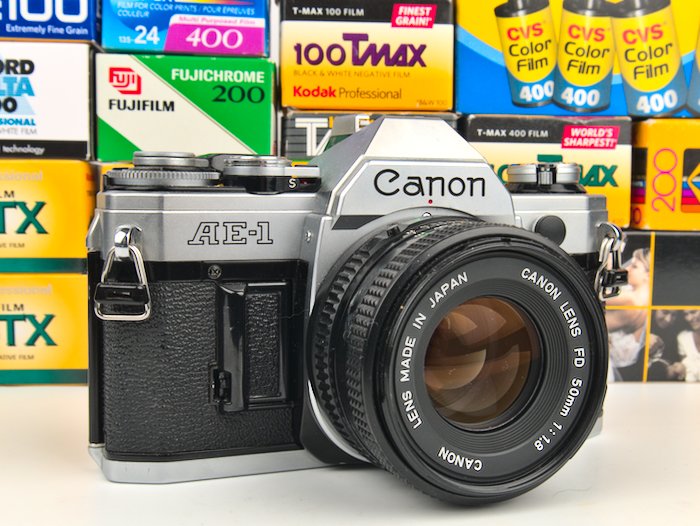
All of the steps needed to safely rewind a roll of film from the Canon AE-1 will be covered. Additionally, the options to get the film developed are covered.
If you need help on loading film into the camera that has already been covered in this step by step guide on how to load film into the Canon AE-1.
How to Rewind Film
Time needed: 1 minute.
Here are all the steps you need to follow to successfully rewind film from your Canon AE-1.
-
Unlock the film take-up spool.
Find and press the small button on the bottom of the Canon AE-1. It is black with a small white dot, located near the door for the motor drive.
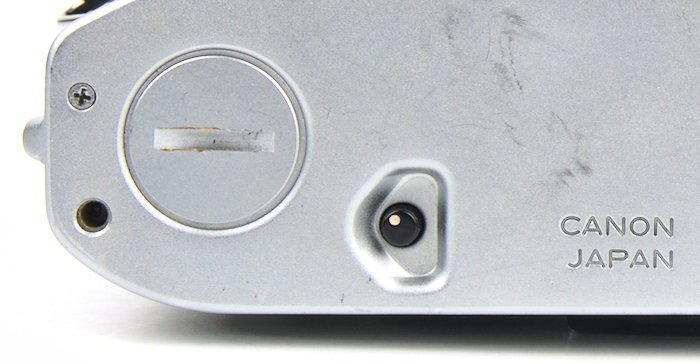
-
Fold the lever out from the film rewind knob.
Fold the lever out. Take note of the direction the arrow points to.
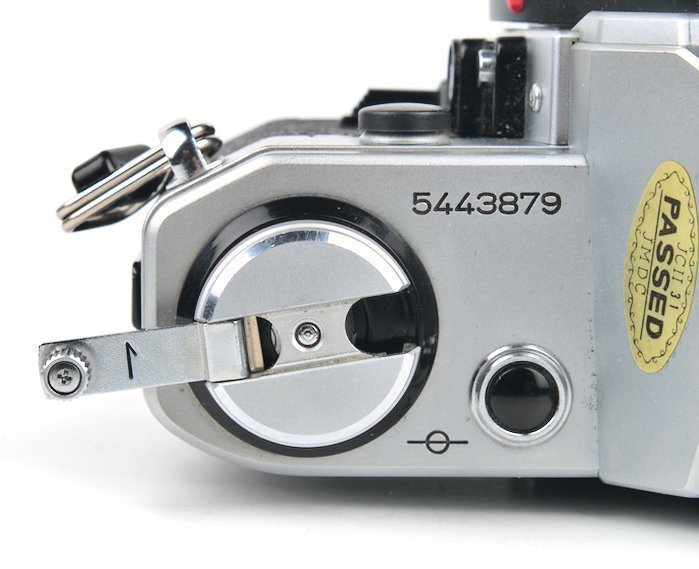
-
Wind the film back into the canister.
Rotate the lever clockwise. You should be able to feel the film wind onto the spool.
You’ll be able to feel when the film has been fully rewound. There will be less resistance when turning the film rewind knob. -
Pull up on the film rewind knob.
This will open the film door.
Keep the knob raised to allow the canister to be removed.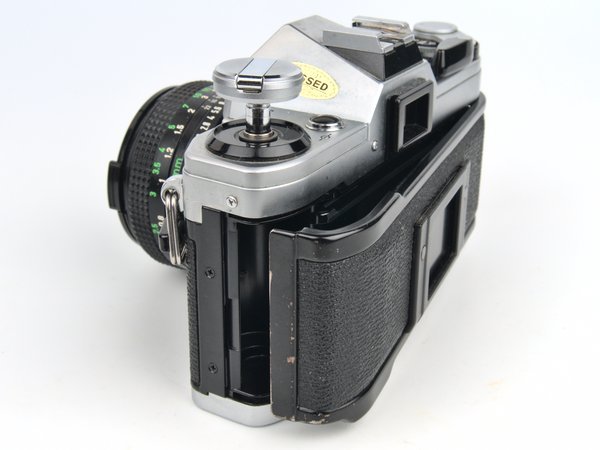
-
Remove the film canister.
Remove the 35mm film canister from the camera. Keep it away from direct sunlight, heat, and moisture.
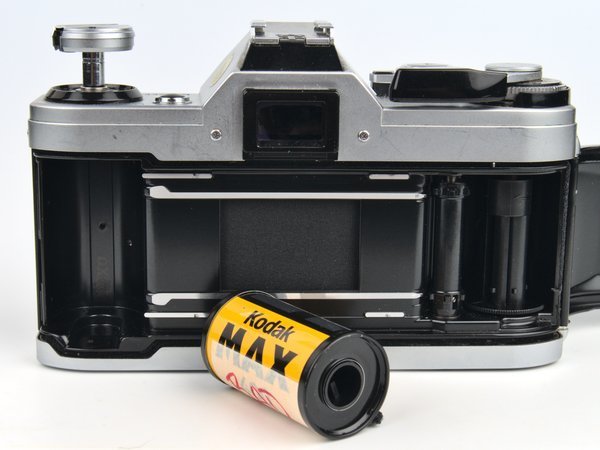
-
Load another roll of film.
Now is the best time to load another roll of film into the camera. Here is a step by step guide on how to load film into a Canon AE-1.
If you don’t have another roll of film, you can just close the back of the camera. For long term storage, remove the battery so it does not leak and cause battery corrosion which can ruin the camera.
Where to get your film developed?
There are 3 different ways you can get your film developed.
Develop the Film Yourself
The least expensive and most involved way to develop your film is to do it yourself at home. This is what I prefer to do.
You will need some inexpensive equipment and a way to scan your negatives or slides.
Developing film yourself is definitely worthwhile as long as you are consistently shooting film. If you are only going to occasionally shoot film, mailing it to a lab is going to be less expensive.
Mail Your Film to a Professional Lab
There are many photo labs that offer mail in developing and scanning services. What’s nice is that you’ll get your film scanned using a high-end scanner. This is a big time saver.
Another important aspect is that you’ll get your negatives or slides back from the lab. This will allow you to make prints in a darkroom or re-scan them in the future. Plus they act as a physical back-up.
Depending on the lab you choose, you can have the ability to select the machine that does the scanning and any profiles/corrections that get used.
You can also indicate if film has been pushed or pulled so that it can be processed correctly.
Here is a list of US photo labs that offer mail developing services. I have no affiliation with them and I have not used any of their services.
- The Darkroom
- Photo Place Inc.
- Indie Film Lab
- Richard Photo Lab
- North Coast Photo
- Old School Photo Lab
- Photoworks San Francisco
- New Jersey Film Lab
- Process One
Find a Local Lab
A local lab is a good option as long as it is an independent professional photo lab. These are likely going to be limited to large cities.
The labs located in pharmacies or big box stores are the worst option as they no longer develop the film on location.
What happens is that the pharmacy or big box store will mail the film off to get developed by a third party. You will only receive digital copies of your images. You will not get your negatives or slides back.